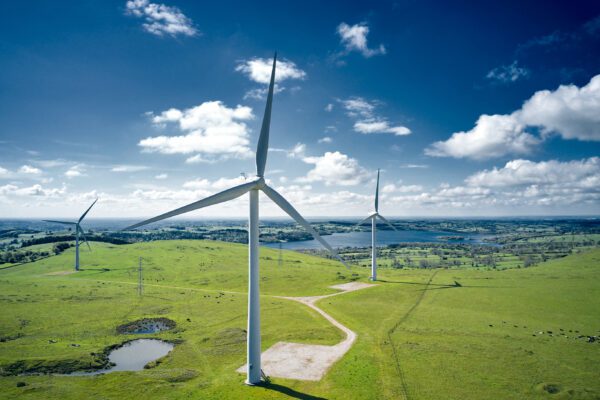
The energy market: A recap of 2022 and what to look out for in 2023 and beyond
Our energy experts have collated an overview of the 2022 energy market, as well as what 2023 and beyond could look like for businesses and how they can prepare.
The energy market has seen dramatic changes over the past twelve months. With rising energy costs and geopolitical influences alongside businesses still recovering from the impacts of COVID-19, managing energy has been very difficult for many businesses across the UK.
Given this, our energy experts have collated an overview of the 2022 energy market, as well as what 2023 and beyond could look like for businesses and how they can prepare.
2022 Energy Market Recap
This year has brought even more unprecedented upside and volatility in the wholesale UK energy markets. January saw an upside following the IFA1-Interconnector fire and a harsh winter with low storage levels. This led to contracts being up to four times higher than pre-COVID levels as we entered the new year.
Ukraine war implications
The invasion of Ukraine then had energy prices jumping up over 1000% compared to the ten-year average. This was mostly due to the EU’s dependence on Russia for more than 30% of their total gas imports pre-conflict. This resulted in concerns across the UK and EU about supply disruptions and security of supply.
Continued friction between the EU, UK and Russia sparked sanctions, causing Russia to retaliate by requiring payments for Russian gas to be made in Roubles. In turn, this caused Germany to announce an ‘early warning’ of a gas emergency, with around 40% of their total gas imports coming from Russia. This triggered continued volatility and restricted gas supplies in the EU, increasing competition and demand.
Nord Stream 1 pipeline
Other impacts from the Nord Stream 1 (NS1) pipeline dropping to 40% capacity before going offline, initiated a strong bullish direction in the market. The fire at the U.S. freeport facility which caused it to go offline dampened U.S. Liquified Natural Gas (LNG) exports by roughly 20%.
Returning in July, the NS1 pipeline was only operating at 20% capacity and restricting pipeline gas flows to the EU, pushing UK energy contracts up. The impacts of halted flows through the NS1 pipeline resulted in reduced flows to France, leading to heightened fears over European gas supply this winter. In late August, flows through the pipeline were completely halted, sending European energy markets soaring once again.
Gas storage
Fears were eased as the UK and EU announced that they had met their 90% gas storage target before the November deadline. However, the UK’s gas storage capacity is not at the standard seen across the whole of Europe, leaving us more exposed to wholesale gas price fluctuations.
The coal benchmark had also moved to the upside throughout the year because of elevated gas-markets incentivising coal gas switching. This switch may provide further bullish pressure as coal looks set to become more prevalent in the UK power stack in the short-term to counteract tight gas markets this winter.
2023 energy landscape and beyond
Looking into 2023 and beyond, experts have continued to raise concern about the stability of UK and European gas supplies. The UK government has sanctioned the reopening of the rough gas storage facility to address gas storage concerns, but this may leave the UK exposed to wholesale gas markets over Winter 2023. The increased storage will ease supply concerns for now but could cause bullish pressure to Summer and Winter 2023 contracts due to increased storage injection demand.
Moving toward LNG
Europe will continue to move further away from Russian gas and import more Liquified Natural Gas (LNG) from further afield. Although LNG is typically more expensive due to shipping costs, as well as competition from Asian hubs increasing the demand and price; European buyers have been willing to pay a premium. It’s also possible that in 2023, Chinese demand for super-chilled fuel will recover and force European prices up further. The UK government is expected to announce a new energy partnership with the U.S. to provide extra supply security throughout 2023.
Refill European gas storage
It’s likely that European gas storage will need to be refilled throughout the Summer months in time for Winter 2023, but we are unlikely to have help from Russian gas supplies. There is, however, concern that this will influence greater uncertainty as to whether storage will be filled in time for Winter 2023 and add upside risk. Analysts are predicting that storage facilities are likely to remain more than 20% full by the start of Summer 2023, offering some market relief.
However, any extra difficulties throughout winter such as further reductions in Russian gas supply, extensions to the U.S. Freeport outage or below normal temperatures could lead to strong upside in UK gas markets and higher gas storage injection demand during Summer 2023 and Winter 2023 contracts.
Global influences
Global gas demand is rising in line with commitments to phase out coal, with gas largely seen as a transitionary fuel away from coal. These bullish drivers and increasing signs of a recession in western countries could provide a limit to the upside, due to high levels of inflation and contradicting GDP in some nations. A recession, however, could see demand limited as consumers cut back on spending, whilst the impact on industrial demand could be similar as higher commodity and energy costs induce a slowdown in industrial activity.
Possible blackouts
Ofgem and the National Grid ESO recently issued warnings over possible blackouts over the first quarter of 2023, specifically in the coldest months of January and February, in the event of a gas supply emergency. However, this is only a worst-case scenario as the UK would have to be hit by a long-lasting period of cold weather along with Russia and Norway cutting off the remaining gas supply for this to be a reality.
EDF 2023 output
Low nuclear output from France’s EDF, following the lower output revision for 2023 like with 2022, is likely to exacerbate this demand for fossil-fuelled generation at a time of elevated fossil-fuelled prices. Growing signs of a recession could have a bearish impact on power markets as they have on gas markets, but it could also provide some bullish signals to later-dated contracts with higher commodity inflation, slowing investment into new renewable capacity. Despite EDF revising output for 2023 lower, it is still higher than the output expected for 2022. Production is also expected to increase to reach 50 GW of availability by January 2023.
Although delays to restarting reactors continue to remain a concern and any deviation from the forecast is likely to pose questions in the market. The Energy Bill Relief Scheme (EBRS) announced by the UK government also could pose some downside for businesses throughout this winter as there is now a limit on what consumers will now pay. However, this could weaken demand destruction concerns at the same time the UK and EU is struggling with tight global supplies.
Prepare your business for 2023
The market signs show that 2023 will be as equally challenging, UK businesses will also need to look at reducing their energy consumption and become more efficient to reduce their energy spend.
Download your copy of our Business Energy Guide.
Working with an expert who has full visibility of the energy market, can help you to find the ideal buying solution for your business. We’re completely independent and have complete access to all energy trading broker platforms and exchanges. Get prepared for 2023 by contacting us today on 01772 689250 or email [email protected].










